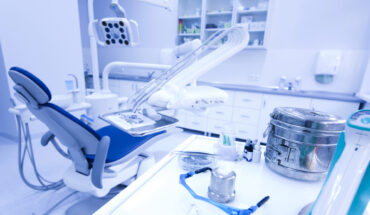
The toothbrush, a seemingly innocuous tool in our daily oral hygiene routine, plays a vital role in maintaining dental health. However, beneath its bristles lies a potential breeding ground for germs and bacteria. In this article, we will explore the often-overlooked reality that your toothbrush may not be as pristine as you believe, shedding light on the potential health risks associated with bacterial contamination and offering practical tips on how to maintain a cleaner, safer oral care routine.
The Bacterial Haven on Your Toothbrush
A toothbrush, by design, is exposed to the moist environment of the bathroom, providing an ideal setting for the proliferation of bacteria. The bristles, while effective in removing plaque and debris from teeth, can also trap and retain microorganisms, creating a reservoir for potential contamination.
Research has shown that common bacteria, including streptococcus, staphylococcus, and even fecal coliforms, can be present on toothbrushes. These microorganisms may enter the oral cavity during brushing, posing a risk of infection and contributing to oral health issues.
Factors Contributing to Bacterial Growth
Several factors contribute to the growth of bacteria on toothbrushes, emphasizing the importance of understanding and mitigating these risks for maintaining optimal oral hygiene.
Moisture: Bacteria thrive in damp environments, and the bathroom provides an ideal breeding ground. The residual water on toothbrush bristles after use creates a conducive setting for bacterial growth.
Airborne Contaminants: Bathrooms are not only humid but also home to airborne particles and contaminants. Every flush of the toilet releases a spray of microscopic particles into the air, settling on surfaces, including toothbrushes.
Storage Practices: The way toothbrushes are stored can impact their cleanliness. Toothbrushes stored in close proximity to each other can lead to cross-contamination, as bristles may come into contact with those of neighboring brushes.
Health Implications of Bacterial Contamination
Understanding the potential health risks associated with bacterial contamination on toothbrushes is crucial for maintaining overall well-being.
Oral Infections: Bacteria on toothbrushes can contribute to oral infections, including gingivitis and periodontitis. The introduction of harmful bacteria into the oral cavity during brushing may compromise gum health and contribute to the development of inflammatory conditions.
Respiratory Infections: In addition to oral health concerns, contaminated toothbrushes may pose a risk of respiratory infections. Bacteria present on toothbrushes can be inhaled, potentially leading to respiratory issues, particularly in individuals with compromised immune systems.
Gastrointestinal Distress: The presence of fecal coliforms on toothbrushes raises concerns about gastrointestinal health. While the likelihood of direct transmission to the gastrointestinal tract is low, the potential risk exists, particularly in instances of poor hygiene practices.
Practical Tips for Maintaining a Cleaner Toothbrush
Ensuring the cleanliness of your toothbrush is a simple yet often overlooked aspect of oral care. By adopting practical tips and incorporating them into your daily routine, you can reduce the risk of bacterial contamination and promote a healthier oral environment.
Rinse Thoroughly: After each use, thoroughly rinse your toothbrush under running water to remove any remaining toothpaste, debris, and bacteria. This simple practice helps minimize the accumulation of contaminants on the bristles.
Allow Proper Drying: Store your toothbrush in an upright position to allow proper air circulation and drying between uses. Avoid covering the toothbrush or storing it in closed containers, as this can create a moist environment conducive to bacterial growth.
Replace Regularly: Toothbrushes have a limited lifespan. Replace your toothbrush every three to four months, or sooner if the bristles appear frayed. A fresh toothbrush not only ensures effective cleaning but also reduces the accumulation of bacteria over time.
Individual Storage: If multiple toothbrushes are stored in a shared holder, ensure they are spaced apart to prevent cross-contamination. Avoid letting the bristles of different toothbrushes come into contact with each other.
UV Toothbrush Sanitizers: Consider investing in a UV toothbrush sanitizer, a device designed to eliminate bacteria using ultraviolet light. These sanitizers can be effective in reducing microbial contamination on toothbrushes.
Store Away from Toilet: Keep your toothbrush at a safe distance from the toilet to minimize exposure to airborne particles generated during flushing. Consider closing the toilet lid before flushing to further reduce the dispersion of contaminants.
The Future of Toothbrushes
While the concept of a bacteria-laden toothbrush may be unsettling, awareness and proactive measures can significantly mitigate the risks associated with bacterial contamination. Maintaining a cleaner toothbrush is not only essential for oral health but also contributes to overall well-being by reducing the potential for infections and other health issues.
A futuristic model is that dental couture is starting to influence toothbrush design which will also take into account hygiene aspects.
By adopting simple yet effective hygiene practices, such as thorough rinsing, proper drying, regular replacement, and individual storage, individuals can transform their oral care routines into safer and more hygienic practices. Additionally, the use of UV toothbrush sanitizers provides an extra layer of protection, helping to eliminate bacteria and ensure a cleaner toothbrush.
In the pursuit of a healthier smile, it’s crucial to extend our focus beyond the act of brushing itself and consider the cleanliness of the tool we use. A cleaner toothbrush translates to a cleaner oral environment, reducing the likelihood of bacterial transmission and contributing to a more robust foundation for overall oral health.
Hopefully this article helps people realise that toothbrush hygiene is not to be listed among oral and orthodontic myths but father scientific facts – so we can all enjoy healthier smiles together.




